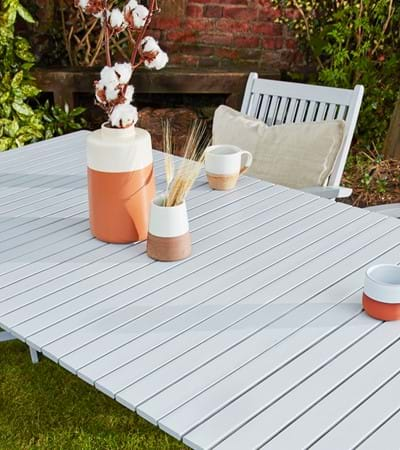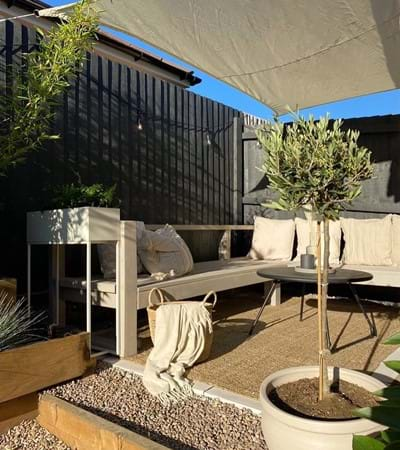

15 vertical gardening design tips
15 Vertical Gardening Design Tips
Vertical gardening is a great way to add some greenery to your outdoor space, whether you have a large or small garden. By growing plants vertically, you can make the most of limited space and create an eye-catching feature that's sure to impress. However, vertical gardening can also present some unique challenges, such as selecting the right plants and ensuring proper watering and sunlight exposure.
To help, we've gathered some top tips for successful vertical gardening. Whether you're a seasoned gardener or just starting out, these tips will help you create a stunning vertical garden that thrives all season long.

Different types of vertical gardening
There are many different types of vertical gardening, each with its own unique benefits and challenges.
Trellises and supports
One popular type of vertical gardening is the use of trellises and supports. These structures allow climbing plants such as clematis or roses to grow vertically, adding height and interest to a garden wall or fence. Trellises are also great for creating privacy screens or dividing up outdoor spaces.
Living or green walls
Another type of vertical gardening is the use of living walls or green walls. These are essentially walls covered in plants, either grown in soil-filled pockets attached to the wall or in hydroponic systems that circulate water and nutrients.
Pallet gardens
For those looking for a more DIY approach, pallet gardens offer a fun and budget-friendly option. By repurposing old wooden pallets, gardeners can create a vertical planter that can be hung on a wall or leaned against a fence. Pallet gardens are perfect for growing herbs, succulents or other small plants.
Tower gardens
Tower gardens are another popular type of vertical gardening that involves growing plants in stacked layers using hydroponics technology. Tower gardens are ideal for growing vegetables such as lettuce or tomatoes in small spaces like balconies or patios.
15 Vertical Gardening Design Tips
1. Use lightweight soil
When planting in a vertical garden, it's essential to use lightweight soil that won't weigh down your structure or create drainage problems. Look for potting mix specifically formulated for container gardening.
2. Plant a variety of plants
Try planting a mix of annuals and perennials for year-round colour and interest. Tall climbers such as honeysuckle or jasmine can bring texture to the design, while shrubs like lavender or rosemary will give you fragrance too.
3. Choose the right containers
Select vertical containers that will work best for your vertical gardening set-up, whether it’s hanging baskets, trellises, wall planters or other vertical planters. Make sure they are deep enough and provide drainage holes for proper drainage.
4. Consider vertical planters
Vertical planters are a great way to add height to vertical gardens, as they can be attached to any vertical surface such as fences or walls. They also make watering easier and more efficient, as you don’t have to worry about spilling soil or water on the ground below.
5. Maximise sunlight
Vertical gardening relies on maximizing the amount of sunlight that reaches your plants, so it’s important to consider where your vertical garden will go in relation to sunlight exposure. If possible, try and position the vertical garden in an area that gets at least six hours of direct sun each day.
6. Install a vertical irrigation system
Vertical gardens need to be watered regularly, so installing a vertical irrigation system can make this easier and more efficient. This type of system consists of vertical pipes that are attached to the vertical garden structure, with each pipe delivering water directly to the plants from a single source.
7. Consider maintenance requirements
Vertical gardening requires regular pruning and upkeep in order to keep it looking its best, so you should factor this into your design plans. Look into low-maintenance options such as installing automated watering systems or self-watering containers for easy care.
8. Environmentally-friendly pest control
Vertical gardens attract lots of insects and pests due to the close proximity of plants. Therefore, it’s important to include environmentally-friendly pest control measures in your vertical garden plans. Also, consider introducing beneficial insects such as ladybirds.
9. Utilise vertical structures
Vertical gardens can be built on almost any vertical structure, from trellises and arbours to pergolas and walls. Each of these structures can provide vertical support for the plants while adding extra height to the vertical garden design. For more information on how to attach a trellis to a fence or wall, please check out our handy guide.
10. Use vertical lighting
Adding lights around a vertical garden can create an inviting atmosphere at night and make it easier to see the plants in the dark. You could also use small spotlights to highlight certain features of your vertical garden, such as pathways or vertical structures.
11. Pair vertical plants with climbers
Vertical gardens are a great way to showcase vertical plants such as tomatoes, peppers, or climbing roses. But for an extra wow factor, pair these vertical plants with trailing vines and flowering climbers like morning glory or clematis for a beautiful vertical arrangement that blooms all year round.
12. Consider the climate
Vertical gardening is not suitable for all climates, so consider your local climate when choosing what plants to include in your vertical garden design. Think about planting varieties that require less water and can withstand extreme temperatures if needed.
13. Mix up plant colours and textures
To create an eye-catching design, consider mixing up plant colours and textures within your vertical garden. Not only does this add depth and interest, but it can camouflage any bare spots.
14. Alternative vertical supports
Vertical supports such as bamboo stakes, metal cages or even simple tomato cages can be used to add height to a vertical garden while providing additional support for the vines and climbers growing up them. The trick here is to choose sturdy materials that are designed specifically for vertical gardening use and make sure they’re securely fastened into place for proper stability.
15. Decorate your vertical garden
If you want to go the extra mile and add a pop of colour or an extra design element to your vertical garden, consider painting planters and trellises with garden paint. This could be the finishing touch needed to bring your vertical garden vision to life.

What is the disadvantage of vertical gardening?
Vertical gardening can be more challenging to maintain, as some plants may require additional care and attention in order to thrive in their vertical environment. Additionally, vertical gardens can be subject to higher wind speeds which could cause damage to the plants or structures; so it’s important to consider these factors when designing your vertical garden.
Vertical gardening is an increasingly popular way of creating lush, productive landscapes that can bring life and greenery into small spaces. With careful planning and design considerations, you can create a stunning vertical garden that will provide beauty and function for years to come!




![Ronseal_Decking_Black_Outdoor_Decking[2].jpg](/media/2457/ronseal_decking_black_outdoor_decking-2.jpg?center=0.58024691358024694,0.4567901234567901&mode=crop&width=400&height=450&rnd=132721240950000000)